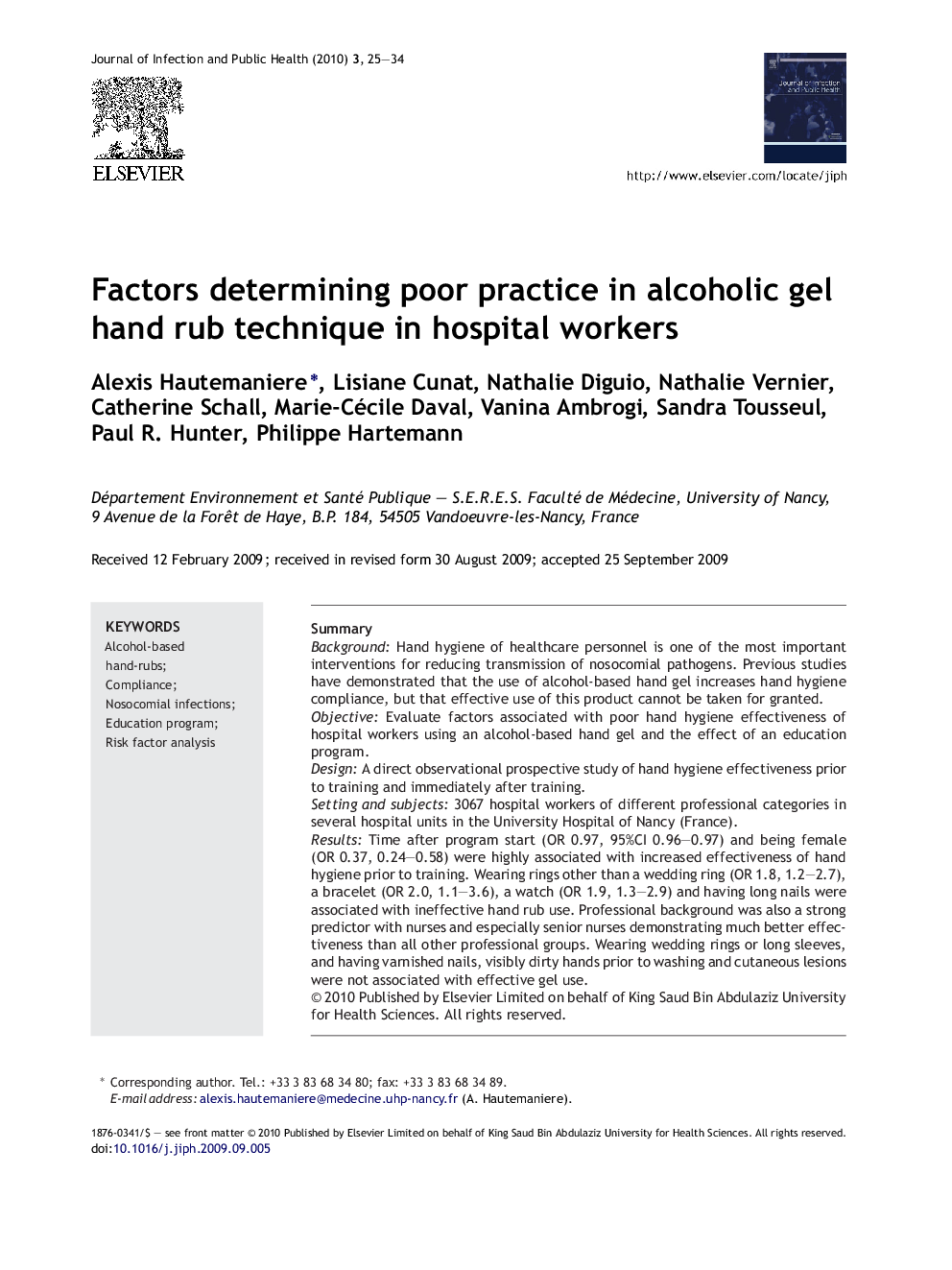| Article ID | Journal | Published Year | Pages | File Type |
|---|---|---|---|---|
| 3406186 | Journal of Infection and Public Health | 2010 | 10 Pages |
SummaryBackgroundHand hygiene of healthcare personnel is one of the most important interventions for reducing transmission of nosocomial pathogens. Previous studies have demonstrated that the use of alcohol-based hand gel increases hand hygiene compliance, but that effective use of this product cannot be taken for granted.ObjectiveEvaluate factors associated with poor hand hygiene effectiveness of hospital workers using an alcohol-based hand gel and the effect of an education program.DesignA direct observational prospective study of hand hygiene effectiveness prior to training and immediately after training.Setting and subjects3067 hospital workers of different professional categories in several hospital units in the University Hospital of Nancy (France).ResultsTime after program start (OR 0.97, 95%CI 0.96–0.97) and being female (OR 0.37, 0.24–0.58) were highly associated with increased effectiveness of hand hygiene prior to training. Wearing rings other than a wedding ring (OR 1.8, 1.2–2.7), a bracelet (OR 2.0, 1.1–3.6), a watch (OR 1.9, 1.3–2.9) and having long nails were associated with ineffective hand rub use. Professional background was also a strong predictor with nurses and especially senior nurses demonstrating much better effectiveness than all other professional groups. Wearing wedding rings or long sleeves, and having varnished nails, visibly dirty hands prior to washing and cutaneous lesions were not associated with effective gel use.ConclusionThese results demonstrate that an educational program can significantly improve the proper practices for using hand rub and hand washing compliance. This study has also demonstrated that wearing rings, bracelets, watches and long nails impair hand gel application but that wedding rings, long sleeves and varnished nails do not. The finding of that hand hygiene effectiveness increased with time even prior to training indicates that knowledge gained by staff trained early diffused into those who had not yet been trained.
